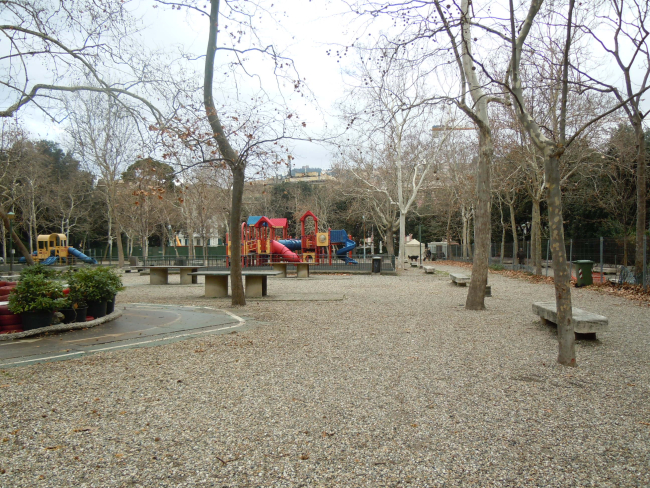Spianata dell’Acquasola
Today's park stands on an area that was part of the city's ancient 14th-century walls. In the mid-16th century, Acquasola was not yet used as a public garden and was known by the name of de Müggi (meaning "the piles" in the Genoese dialect). The area was used as a scrapheap for the rubble produced during the construction of today's Via Garibaldi. The Parco dell'Acquasola (Acquasola Park) was designed in 1821 by the architect Carlo Barabino on the site of a medieval bastion linked to the city's 16th-century walls. The project was completed in 1825 with a terrace structure that connected it to the nearby park of Villetta Di Negro. On the opposite side, facing Via di San Vincenzo, this esplanade was enclosed by a large, strong wall, built in a military style. Following modifications requested by Domenico Chiodo, the wall took the shape of a fortification, with a round tower in one corner.
The park is actually a garden with a rectangular layout and a strictly formal style, designed for enjoying walks and carriage rides. Barabino took inspiration from France's boulevards, and his was the first public park of Genoa. Stretching over two and a half hectares, the Giardini dell'Acquasola (Acquasola Gardens) have been enjoyed as a place for taking walks or playing games since the early 19th century.
Useful info





